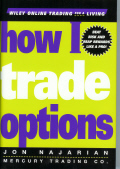|
||
|
|
| www.tradewins.com |
|
|
|
© Copyright 2025 TradeWins.com. All rights reserved.
TradeWins Publishing, 22C New Leicester Hwy, #117, Asheville, NC 28806 Email: support@iss-trading.com | Phone: 888-233-1431 | Fax: 888-258-4938 |
| NOTICE: Auto-trading, or any broker or advisor-directed type of trading, is not supported or endorsed by TradeWins Publishing (“TradeWins”). The information provided by TradeWins in its various materials, including trading recommendations, newsletters and educational publications is not customized or personalized for any particular person or risk profile. Past results are not necessarily indicative of future results. Results presented can vary and may not be typical for all subscribers. There are substantial risks involved with investing in the stock and options market, including the risk of total loss. You should only trade or invest "risk capital" - funds you can afford to lose. |







